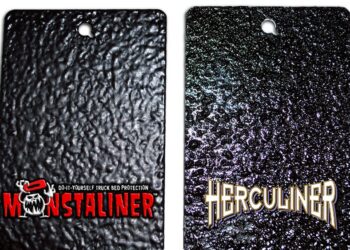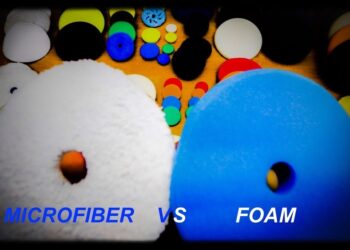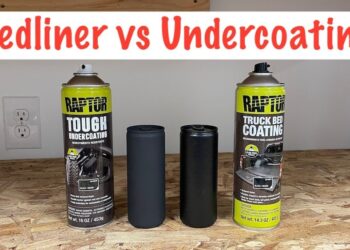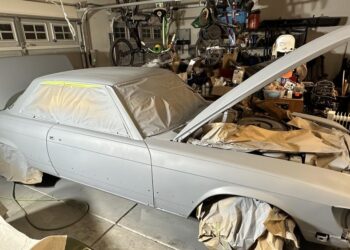When it comes to fixing dents, cracks, or holes in your car, choosing the right body filler can make all the difference. You might have heard of Bondo and Evercoat, two popular names in the world of auto body repair.
But which one is truly better for your project? Whether you’re a DIY enthusiast or a professional, understanding how Bondo and Evercoat compare can save you time, money, and frustration. You’ll discover the key differences, pros, and cons of each brand so you can confidently pick the best product for your car’s needs.
Ready to find out which body filler will give your ride a flawless finish? Let’s dive in.
Bondo Basics
Bondo is a popular body filler used in auto repair and other surface restoration projects. It helps fill dents, holes, and imperfections before painting. Understanding the basics of Bondo can help you decide if it fits your project needs.
Material Composition
Bondo is mainly made of polyester resin mixed with a hardener. This mix creates a thick paste that hardens quickly. The result is a durable, sandable surface that bonds well to metal and wood.
Common Uses
Bondo is commonly used in automotive repairs for fixing dents and rust holes. It also works for home projects like filling wood cracks and holes. Its versatility makes it a go-to filler for many DIY enthusiasts and professionals.
Application Tips
Start with a clean, dry surface for best results. Mix the resin and hardener in small amounts. Apply the filler with a spreader in thin layers. Let it cure fully before sanding. Use a coarse sandpaper first, then a fine grit for a smooth finish.
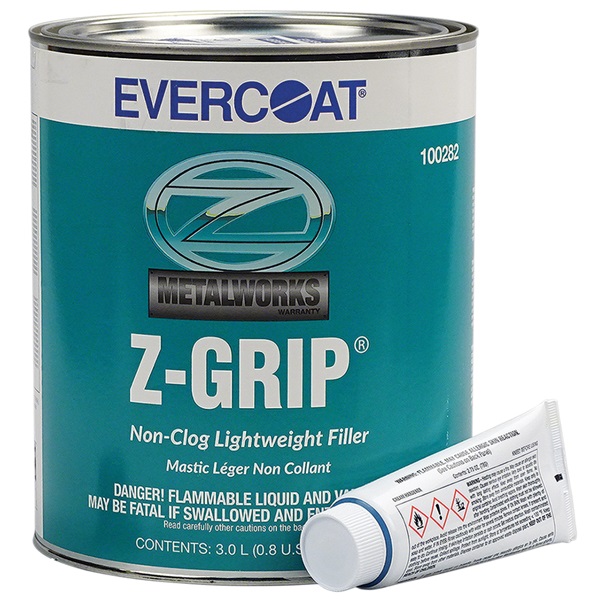
Credit: www.tptools.com
Evercoat Features
Evercoat offers a range of features that make it a popular choice for body filler needs. It is designed to provide smooth finishes and strong adhesion. The brand focuses on durability and ease of use, catering to both professionals and DIYers. Let’s explore what sets Evercoat apart in terms of product variety, special qualities, and user feedback.
Product Range
Evercoat provides a wide selection of fillers and accessories. Its lineup includes lightweight fillers, fiberglass fillers, and glazing putty. Each product suits different repair types, from small dents to major bodywork. The variety helps users pick the right material for their specific project. This flexibility makes Evercoat useful for many automotive and industrial tasks.
Unique Qualities
Evercoat fillers are known for their excellent sandability. They create fewer pinholes, leading to smoother surfaces. Many products cure quickly, saving time during repairs. Some fillers offer enhanced flexibility, which reduces cracking on plastic parts. Fiberglass-reinforced options add strength for tough repairs. These qualities improve both the finish and durability of the repair.
User Experience
Users report that Evercoat products are easy to apply and shape. The texture is smooth, allowing even beginners to work with confidence. Many appreciate the quick drying time, which speeds up the overall process. Clean-up is straightforward, with less dust during sanding. Positive feedback highlights how Evercoat helps achieve professional-looking results without hassle.
Performance Comparison
Comparing Bondo and Evercoat reveals key differences in performance. Both are popular choices for auto body repairs. Each has strengths that suit different repair needs. Understanding these helps pick the right filler for the job.
Below is a detailed look at durability, sanding, flexibility, and crack resistance. These factors affect the quality and longevity of your repairs.
Durability And Strength
Bondo offers strong adhesion on metal surfaces. It hardens quickly and can handle minor impacts well. Evercoat provides slightly better strength for larger repairs. It bonds firmly and resists shrinking over time. Evercoat fillers often last longer under stress. Both products resist water and chemicals after curing. Evercoat’s formulations sometimes include fiberglass for extra toughness. This makes it ideal for heavy-duty fixes. Choose based on the repair size and expected wear.
Sanding And Finishing
Bondo sands smoothly with standard tools. It shapes easily for a clean finish. Evercoat is known for finer sanding properties. It creates fewer pinholes and smoother surfaces. This reduces time spent on final polishing. Evercoat fillers also spread more evenly. This helps achieve a seamless repair with less effort. Both products allow quick sanding after curing. Proper sanding ensures better paint adhesion and final appearance.
Flexibility And Crack Resistance
Flexibility is crucial for areas that move or vibrate. Bondo is more rigid and may crack on flexible parts. Evercoat offers flexible formulas designed for plastic and bumpers. These fillers bend slightly with the surface. This reduces cracking and improves repair durability. For parts subject to stress, Evercoat’s flexible fillers perform better. Rigid fillers like Bondo suit solid metal panels. Select based on the material and stress level.

Credit: www.reddit.com
Best Use Cases
Choosing the right product depends on the project material and repair type. Bondo and Evercoat serve different needs. Each excels in specific situations. Understanding their best use cases helps pick the right filler for your work.
Auto Body Repairs
Bondo is popular for metal auto body repairs. It adheres well to steel and aluminum surfaces. Evercoat offers lightweight fillers like Rage Gold for smoother sanding. These reduce pinholes and save time. Evercoat also provides flexible fillers. These work well on plastic bumpers. They bend with the material to avoid cracks. Fiberglass-reinforced fillers from Evercoat add strength for fiberglass parts. Choose based on the repair’s material and shape.
Plastic And Fiberglass
Evercoat outperforms Bondo on plastic and fiberglass. Its flexible fillers prevent cracking on plastic parts. Fiberglass-reinforced options give strong, durable repairs. Bondo tends to be more rigid and can crack on plastic. For fiberglass, Evercoat’s fillers blend easily and sand smoothly. They create a seamless finish. Use Evercoat for bumpers, fenders, and fiberglass panels. It provides lasting repairs on flexible surfaces.
Wood And General Repairs
Bondo works well on wood and general repairs. It fills dents and holes quickly. Sanding is easy after curing. Evercoat also offers products for wood repair. Water-based putties work well for indoor wood. They are easy to sand and paint. For outdoor wood, epoxy resins provide stronger, weather-resistant fixes. Choose Bondo or Evercoat based on the repair size and finish needed. Both handle general repairs but vary in flexibility and durability.
Alternative Fillers
Alternative fillers offer versatile options beyond traditional Bondo and Evercoat products. Each type suits different repair needs and materials. Choosing the right filler can improve durability and finish quality. Below are some common alternative fillers used in auto body and other repairs.
Epoxy Resins
Epoxy resins provide excellent strength and durability. They work well for structural repairs and outdoor use. These resins bond tightly to metal, wood, and fiberglass. Epoxy cures hard and resists moisture and chemicals. They are ideal when a tough, long-lasting repair is needed. Epoxy fillers often require mixing two parts before application.
Water Putty
Water putty is a good choice for indoor and wood repairs. It comes as a powder and mixes with water to form a paste. After drying, it sands smoothly and accepts paint well. Water putty is easy to use and inexpensive. It is not suitable for areas exposed to water or heavy impact.
Fiberglass And Resin
Fiberglass combined with resin creates a strong, reinforced filler. This mixture works well on fiberglass panels and damaged plastic. It adds structural support to weak or cracked areas. Fiberglass fillers cure fast and can be sanded into shape. They provide a durable base for further finishing and painting.
Flexible Fillers
Flexible fillers are designed for parts that move or flex, like plastic bumpers. These fillers bend with the material to prevent cracking and separation. They are lightweight and easy to sand. Flexible fillers often have a rubberized texture after curing. Use these for repairs where standard fillers would fail due to movement.
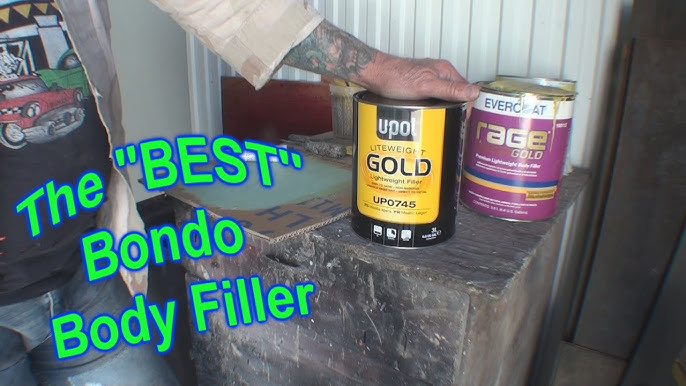
Credit: www.youtube.com
Cost And Availability
The cost and availability of Bondo and Evercoat are key factors for many buyers. Choosing the right product depends on budget and ease of purchase. Both brands offer quality fillers, but prices vary. Availability can also affect your project timeline and convenience.
Pricing Differences
Bondo generally costs less than Evercoat. It suits small repairs and DIY projects on a budget. Evercoat tends to be pricier but offers premium options. These often provide better durability and finish. Price differences reflect the quality and product range.
Where To Buy
Bondo is widely available in most auto parts stores and big-box retailers. Evercoat may not be as common in all locations. It is often found in specialty automotive shops and online stores. Checking availability locally can save time and shipping costs.
Value For Money
Bondo offers good value for general body filler needs. It works well for basic repairs and small jobs. Evercoat delivers higher performance for demanding projects. Its products last longer and need less sanding. Investing in Evercoat can reduce rework and improve results.
User Reviews And Feedback
User reviews and feedback offer valuable insight into the real-world performance of Bondo and Evercoat. They reveal how professionals and DIYers experience these products during use. Honest opinions help understand strengths and weaknesses beyond product descriptions.
Reading a variety of user experiences helps in making an informed choice. Both Bondo and Evercoat have loyal users, but their feedback varies based on expectations and application.
Professional Opinions
Many auto body professionals trust Evercoat for its smooth finish and ease of sanding. They report fewer pinholes and longer working time compared to Bondo. Some say Evercoat works better on plastic parts and flexible surfaces.
Bondo remains popular for quick repairs and general use. Professionals mention it cures fast and bonds well to metal. However, some find it harder to sand and prone to shrinkage if mixed incorrectly.
Diy Enthusiasts
DIY users appreciate Bondo for its availability and price. Beginners find it straightforward to use for small dents and scratches. Some note that Bondo can be messy and requires careful mixing.
Evercoat gets praise from DIYers who want a professional finish at home. They say it is easier to shape and sands down smoothly. A few users mention it costs more but delivers better results.
Common Complaints
Both products face criticism for dust created during sanding. Users advise wearing masks to avoid inhaling particles. Some complain about short working times if the filler is mixed too fast.
Bondo users often report cracking or shrinking in larger repairs. Evercoat users sometimes find it difficult to remove from tools after curing. Cost is another point where Bondo is favored for being cheaper.
Tips For Choosing Fillers
Choosing the right filler affects the quality and durability of your repair. Fillers like Bondo and Evercoat serve different needs. Understanding key factors helps pick the best one for your task. Consider the project type, material, and future use to make a smart choice.
Project Requirements
Know what your repair needs before selecting a filler. Small dents need smooth, easy-to-sand fillers. Large holes or deep damage require stronger, thicker fillers. Automotive repairs may need flexible fillers for plastic parts. Wood repairs often call for fillers that can be painted and sanded easily.
Material Compatibility
Match the filler to the repair surface. Bondo works well on metal and wood. Evercoat offers special formulas for fiberglass and plastics. Using the wrong filler can cause cracks or poor adhesion. Check product labels for compatibility with your material. This ensures long-lasting repairs and a smooth finish.
Long-term Considerations
Think about how the repair will hold up over time. Some fillers resist moisture and heat better than others. Evercoat fillers often provide more flexibility to prevent cracking. Bondo is strong but can be brittle on certain surfaces. Consider exposure to weather, movement, and wear. Choose a filler that stays durable in your conditions.
Frequently Asked Questions
What Is Better Than Bondo?
Epoxy resins offer superior strength for structural repairs. Evercoat Rage Gold and U-Pol Gold provide better sanding and flexibility than Bondo. Water putty suits indoor wood fixes, while fiberglass fillers add durability for tough automotive repairs. Choose based on project needs for best results.
Which Body Filler Is Best?
Evercoat Rage Gold and U-POL Gold are top body fillers for auto work, offering easy application and fewer pinholes. Epoxy resins suit structural repairs for strength and durability. For wood, Durham’s Rock Hard Water Putty works well indoors. Choose fillers based on project needs.
Is Evercoat Waterproof?
Evercoat is not fully waterproof but resists moisture better than standard fillers. Use epoxy for waterproof, durable repairs.
When Should You Not Use Bondo?
Avoid using Bondo on flexible plastics, structural repairs, or outdoor wood exposed to moisture. Choose epoxy or flexible fillers instead.
What Are The Main Differences Between Bondo And Evercoat?
Bondo is heavier and widely used, while Evercoat offers lighter, flexible fillers with fewer pinholes.
Conclusion
Choosing between Bondo and Evercoat depends on your project needs. Bondo works well for quick, general repairs. Evercoat offers smoother finishes and easier sanding. For flexible or plastic parts, Evercoat’s specialized fillers perform better. Wood repairs benefit more from water putty or epoxy than from Bondo.
Consider the material and repair type before deciding. Both brands have strengths, but the right choice improves your results. Keep your project goals clear and pick the product that fits best. Simple tools and good prep work ensure a strong, lasting fix.


